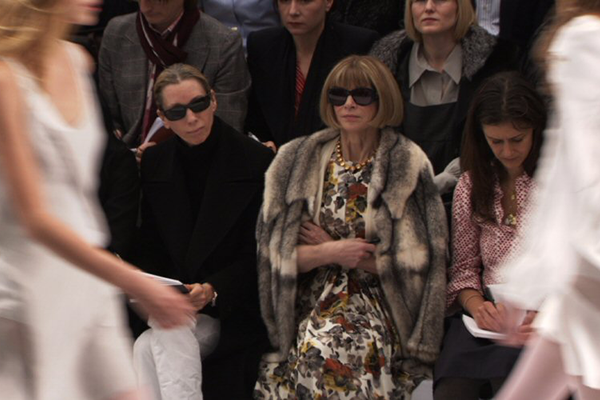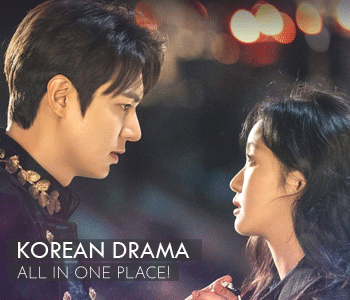BRYN TILLY selects his favourite independent and mainstream of 2009 movies …
Best of 2009 Movies Collectio
THE SEPTEMBER ISSUE
“… The September Issue is fascinating and swiftly-paced, with a melodic soundtrack of hip
contemporary tunes from the likes of Mark Ronson, Ladytron, Cinematic Orchestra, and
LCD Soundsystem, and a wry sense of humour. The pressure and demands these women
deal with is only really hinted at, while there’s plenty of peripheral pizzazz and cult of personality dynamics jostling for position in this peculiarly precise realm. …”
Anna Wintour is the Editor-in-Chief for American Vogue magazine, and its famous September issue (the January of the fashion world) is apparently bought by one-in-eight American women. The 2007 September issue was the biggest issue in the history of the magazine; 840 pages and weighing in at over 2 kilos! It sold thirteen million copies. Now that’s some heavy couture right there!
Documentary filmmaker R.J. Cutler, who made the Oscar-nominated political doco The War Room, chronicling Bill Clinton’s 1992 presidential campaign, turns his cameras onto the fashion industry, in particular the American stables of arguably the most famous fashion rag of them all: Vogue. But Cutler doesn’t go for an overview; he’s more interested in the upper echelons of the empire, where Wintour, the notorious ice queen (or “pope” as one of her staff affectionately titles her) reigns supreme over the legendary fashion bible.
But it’s not just Wintour who is instrumental; although she does have final say, and her demands are what go to print. Amongst the small clutch of other very important people who reside in the New York offices and make American Vogue such an extraordinary, trend-setting style publication is another ex-pat English woman; Grace Coddington, the Creative Director.
Anna Wintour has been American Vogue Editor-in-Chief since 1988. She joined Condé Nast Publications in 1993 as Creative Director for American Vogue. She returned to England in 1986 and became Editor-in-Chief for British Vogue. In 1988 she returned to the States and took over the top position at American Vogue. At the same time Grace Coddington began as Fashion Editor, moving up to Creative Director in 1995. These two women look and act like chalk and cheese, yet they have a symbiotic professional relationship which keeps American Vogue at the iconic cutting edge of high fashion.
Anna is demure and feline, her fine features framed by a streaked bob, and large dark sunglasses donning her face whenever she’s at a show. She is thin and dresses immaculately (but can’t stand black) and she doesn’t suffer fools gladly. Grace was once a Vogue model back in the late 50s/early 60s, but a nasty car crash nearly cost an eye, and plastic surgery resulted in her leaving the modeling world behind … but not the fashion. She shuffles around in ill-fitting black attire (to rub Anna the wrong way?), with a huge mane of red hair and a face with more wrinkles than a crocodile-skin purse. She’s described by staff as a genius, though curiously Anna frequently jettisons her painstakingly-arranged fashion photographs from the issue.
The September Issue is fascinating and swiftly-paced, with a melodic soundtrack of hip contemporary tunes from the likes of Mark Ronson, Ladytron, Cinematic Orchestra, and LCD Soundsystem, and a wry sense of humour. The pressure and demands these women deal with is only really hinted at, while there’s plenty of peripheral pizzazz and cult of personality dynamics jostling for position in this peculiarly precise realm.
Andre Leon Talley, the enormous Editor-at-Large, is an entire documentary unto himself! Tiny Thakoon, the up-and-coming Thai designer admits to having shaking hands when he first presented to Anna Wintour. There’s the concern over Sienna Miller’s cover shot showing too much teeth, and in one of the most telling moments, Anna’s daughter Bee Shaffer reminds her mother that she’s not going to become a fashion editor and that she’s pursuing a law degree. Anna nods, smiles and quietly replies, “Yes, well, there’s still time …”
The September Issue is essential viewing for any kind of wardrobe; moleskin jeans and a polyester t-shirt, tweed pantsuit and angora jerkin, or that tiny black dress. Whatever your fashion predilection, you’ll definitely be impressed and entertained, maybe even awed and inspired.

DISTRICT 9
“… This is the best science fiction movie in absolutely years, and certainly one of the most exhilarating movie experiences I’ve had in a while. I’ll be the first to admit I’m a bit of a sf geek, so there is plenty to relish. I very much enjoyed the nu-Star Trek movie, the re-booting, as they call it. But I can’t really compare, because District 9 is so unequivocally original, whereas Star Trek, well, most people know the basic elements of that movie like the back of their hands, even if they’re not Trekkies …”
The name Peter Jackson carries the same kind of kudos as the name Quentin Tarantino. The inclusion of it on a movie can make or break it. In the case of Tarantino, it doesn’t necessarily mean the movie will be any good, for example the recent biker flick, Hellride, which Tarantino produced was a piece of crap. But Peter Jackson has yet to put a foot wrong.
District 9, the feature debut of South African ex-pat (lives and works in Canada) Neill Blomkamp, is produced by Jackson and his New Zealand-based company Wingnut Films, however the movie is set and was shot in Blomkamp’s old stomping ground of Johannesburg, or as it’s more commonly called: Joburg.
This is a contemporary science fiction action flick with an emphasis on hardware and squalor, on socio-politics and corporate corruption. This is the extraterrestrial flick for those who won’t be choosing to see Aliens in the Attic, if you get my drift. Check your sensibilities at the door, District 9 spits expletives and blows chunks hard and fast; this is a hardcore action flick that takes no prisoners.
An alien mothership has been left derelict floating above Johannesberg for the last thirty years. It’s original occupants were discovered as helpless malnourished humanoid crustaceans, or “prawns” as the derogatory xenophobic term is coined by racist humans. A large-scale housing project is erected, a compound known as District 9, and the aliens are forced to dwell in a segregated co-existence with humans.
A private corporation, Multi-National United, is keen to evict the aliens, and re-locate them out of the city. Field operative Wikus (Sharlto Copley) is supervising the transition, but he gets a lot more than he bargained for when he discovers the secret agenda of the MNU which involves the alien’s biotechnological weaponry. Basically all hell breaks loose.
This is the best science fiction movie in absolutely years, and certainly one of the most exhilarating movie experiences I’ve had in a while. I’ll be the first to admit I’m a bit of a sf geek, so there is plenty to relish. I very much enjoyed the nu-Star Trek movie, the re-booting, as they call it. But I can’t really compare, because District 9 is so unequivocally original, whereas Star Trek, well, most people know the basic elements of that movie like the back of their hands, even if they’re not Trekkies.
Neill Blomkamp was originally slated to direct Peter Jackson’s big screen adaptation of the popular futuristic combat video game Halo. The budget was going to be around $145 million. A short six-minute “trailer” was created to woo financiers and distributors, but after months of pre-production the project was canned. In the wake, Jackson’s wife and screenwriting collaborator, Fran Walsh suggested turning Blomkamp’s short satirical alien movie Alive in Joberg into a feature. Jackson and Blomkamp were very enthusiastic and the project was immediately greenlit for a budget of only $30 million.
Considering what the finished movie looks like, it’s astonishing what the production team have done with the budget. It looks like something that cost ten times as much. The brilliantly conceived visual style, production design and integrated CGI effects are state of the art. But what adds so much real weight to the movie, apart from all the photo-realistic digital compositing and pyrotechnics and cleverly weathered hardware, is the excellent screenplay and central performance by Sharlto Copley, co-written with partner Terri Tatchel.
District 9 is a perfect popcorn movie to be seen on the biggest, loudest screen possible. Grab your mates and make a Saturday night of it. You’ll be talking about the movie for days after. This is my pick for movie of the year. So far.

THE ESCAPIST
“… The Escapist looks and feels like a classic 70s movie. The grim prison is anyone’s nightmare. So old school one wonders what decade the movie is actually set in. It’s set in present day, but the prison is in a world of its own. The attention to detail is fantastic, and the nuances of performance from the entire cast are balanced perfectly …”
In an ingeniously constructed narrative that reveals its conceit beautifully and tragically within the movie’s last few moments, The Escapist is one of the very best prison movies of the past twenty years.
Frank Perry (Brian Cox in a career defining performance) is serving a life sentence for a crime that is never revealed, but I guess it must’ve been pretty bad considering he’s serving out time inside for the rest of his natural born days. He’s been resigned to his fate, until news of his beloved, but estranged daughter’s terminal illness. She, like her father, is a tragic case, and Frank realises for his sanity and for the love of God, he must see her before she dies.
Frank plans his escape. He assembles a motley crew to assist him, each of them skilled in different areas; Lenny (Joseph Fiennes), Brodie (Laim Cunningham), Viv (Seu Jorge) and the newbie, young James (Dominic Cooper). But it won’t be easy. To make matters particularly difficult is the attention of volatile junkie Tony (Steven Macintosh) and his brother, the big daddy wing-king, Rizza (Damian Lewis). They won’t be havin’ any of this ‘ere escapin’ business, not while there’s scores still to settle.
Director Rupert Wyatt is delivered an incredibly powerful and resonant first feature. The confidence and assured direction makes it feel like he’s been directing for years. He made a short, Get the Picture, and it was this impressive film that Brian Cox saw and decided he had to fast-track the director into something bigger, something Brian could use as an acting vehicle for himself, as well as being a showcase for Wyatt’s formidable skills.
The Escapist looks and feels like a classic 70s movie. The grim prison is anyone’s nightmare. So old school one wonders what decade the movie is actually set in. It’s set in present day, but the prison is in a world of its own. The attention to detail is fantastic, and the nuances of performance from the entire cast are balanced perfectly.
The actual plot dynamics owe a little to a famous short story (made into a famous early Twilight Zone episode) called An Occurrence at Owl Creek by Ambrose Bierce, but that might be giving too much away already. If you’re familiar with the short story or episode you’ll know what I’m talking about. The entire machinations of the dramatic-thriller rest on the denouement, and it’s a doozy. I take my hat off to Wyatt and his co-screenwriter Daniel Hardy for such tidy, gripping work.
The Escapist has excellent cinematography and production design (a disused cigarette factory was transformed into the amazingly realistic prison interiors). It’s a fictional setting, but it sure looks like a real, and chilling, institution of incarceration: the prison that time forgot. A real jail, however, was used for the landings and wide shots (Kilmainham jail in Dublin). All of these elements add to the movie’s oppressive mood and atmosphere. The implicit violence seethes in the background and on occasion lashes out with explicit brutality.
If you’ve never seen a prison movie, The Escapist is required viewing. But it’s also a beautifully told, harrowing, drama of absolute courage in the worst kind of jeopardy, of love escaping the confines of mortality, the soul freed at last.

THE SYDNEY FILM FESTIVAL
“… an underworld odyssey of vulgarian Bulgarians, flammable flatulence, chewing black gum, and asphalt-licking; a genre-bending highly-stylised exercise in unusual sensuality. …”
The Sydney Film Festival might be considered middle-aged if you were to compare it to a human, but if the latest program is anything to go by, the Festival just gets fresher and more invigorating with every passing year!
However the schedule has been compressed from a fortnight down to just twelve days, and with 120 films that’s one hell of a crash course in world cinema. Everything from hot subversive documentaries to chilling paranormal experiences, from black as coal comedies to spoof blaxploitation, Che Guevara to Roman Polanski, Phil Spector to Anton Corbijn, surreal cutting edge animation to glorious rock and roll, zombies and more zombies.
I’m very excited about the new film from Festival legend Jim Jarmusch and the restored print of the rarely seen Aussie Outback nightmare flick Wake in Fright (1971), plus the plethora of those usual suspects; the wonderful short films that accompany many of the features, which you’ll only ever see at the Festival. As this year’s tagline warns: Don’t Try This At Home.
Get yourself tickets and get into the Festival cinemas!
Opening Night Gala screening is Ken Loach’s new hybrid drama-comedy-thriller Looking for Eric. The rest of the program has been broken into several customized categories: “Take Me On A Journey” (get whisked away with tales both real and imagined), “Push Me To The Edge” (bring on the intensity and leave your comfort zone behind), “Fire Me Up” (get the adrenalin pumping or prepare for heated debate), “Give Me A Kiss” (be romanced or get tangled up in love’s complexities), “Freak Me Out” (be chilled to the bone with this selection of terrifying tales), and “Make Me Laugh” (crack your sides and tickle your funny bone).
There’s the usual talks and forums, awards ceremonies, and this year the official Festival lounge is the very swanky and elevated Hemmesphere (4th floor, Establishment, George Street), where you can schmooze in style while you discuss the philosophical stylistics of Soderbergh.
Here is a cross-section of Festival highlights:
$9.99
Saturday 6 June 7pm @ Dendy Opera Quays
An Australian-Israeli co-production that features an all-star cast providing voices to what’s been described as “a claymation of Robert Altman’s Short Cuts”, Aussie-style. Created in 40 weeks by nine animators under the direction of Tatia Rosenthal, the movie won the audience award at a recent festival in Mexico City.
44 Inch Chest
Friday 5 June 6.30pm @ Dendy Opera Quays
Saturday 13 June 8pm @ Greater Union 8
From the writer of Sexy Beast comes a perverted tale of male bonding and revenge. Debut feature from award-winning photographer Malcolm Venville, this powerful drama uses striking visuals set to a theatrical narrative approach.
Bronson
Saturday 6 June 7pm @ State Theatre
Sunday 7 June 12.15pm @ State Theatre
From the director of the Pusher trilogy is this high-octane cabaret with an explosive soundtrack and heightened use of visual and sound design. It’s a biopic about Britain’s most notorious criminal “Charles Bronson”.
Che (Part 1): The Argentine & Che (Part 2): The Guerilla
Sunday 14 June 2.15pm @ State Theatre (Part 1)
Sunday 14 June 4.45pm @ State Theatre (Part 2)
Steven Soderbergh’s hugely ambitious epic biopic on the legendary, bordering on mythical, doctor turned revolutionary, Cuban Che Guevara played with astonishing conviction by Benicio Del Toro. The first tells of his political dealings with Fidel Castro and his brilliant military tactics. The second part deals with his resignation from duty, his exile and his life in Bolivia. The movies are told with Soderbegh’s masterful control of cinematic story-telling.
It Might Get Loud
Wednesday 3 June 8pm @ Greater Union 8
Saturday 6 June 8pm @ Greater Union 8
The award-winning director of An Inconvenient Truth pays tribute to the electric guitar by bringing together three wildly different, yet utterly distinct and extraordinary guitarists: Jimmy Page, The Edge and Jack White. They each describe their influences and eventually we see them jam together.
The Limits of Control
Thursday 11 June 9.15pm @ Dendy Opera Quays
Saturday 13 June 8pm @ Dendy Opera Quays
Jim Jarmusch’s anti-thriller is a perfectly calibrated exercise in contemporary cool. Could it get even cooler than Isaac de Bankole as the enigmatic drifter and cinematography from Christopher Doyle? Yes, with John Hurt ranting away, Tilda Swinton in a Stetson, and Gael Garcia Bernal amidst surrealist Spanish design.
Prime Mover
Monday 8 June 4pm @ State Theatre
A diesel-fuelled romance with a truck-load of visual chutzpah from mullet-loving director David Caeser (The Idiot Box, Dirty Deeds), and with Michael Dorman and Emily Barclay (both from Suburban Mayhem) sparking chemistry once again, this burns emotional rubber and honks a big horn o’ roadhouse lovin’.
Roman Polanski: Wanted and Desired
Sunday 14 June 12pm @ State Theatre
The toxic influence of media and the double-edged allure of celebrity are the main themes of this compelling portrait of director Roman Polanski, still a fugitive from American law, of which the 1977 case of statutory rape is delved into deep by documaker Marina Zenovich.
Sunshine Barry and the Disco Worms
Monday 8 June 12pm @ Greater Union 8
Saturday 13 June 2.45pm @ Greater Union 9
A Danish animated feature about a worm that turned. Barry is bored of working in the compost industry. He finds an old disco record and he’s hooked. He forms a band with fellow invertebrates Tito, Jimmy, and Gloria, whose voice can shatter disco balls. This one’s for funky kids and adults alike.
Zift
Thursday 4 June 8.15pm @ Greater Union 9
Saturday 6 June 6.15pm @ Greater Union 9
This is one seriously strange movie. If you can imagine David Lynch, Jim Jarmusch and Guy Maddin lost in Bulgaria then that’s a good start. Shot in luminous black and white, it tells the bizarre and fragmented tale of Moth, a convict wrongly imprisoned, a black diamond, and a vengeful partner who wants the rock back. There’s also Ada, the gorgeous femme fatale, and Van Wurst the Eye, with his creepy glass eye. The movie should come with a scratch-and-sniff card as there are references to odours and scents throughout Moth’s carnal and chaotic misadventures. Zift is an underworld odysseyof vulgarian Bulgarians, flammable flatulence, chewing black gum, and licking asphalt; a genre-bending highly-stylised exercise in unusual sensuality. Definitely one to see on the big screen, perhaps after a big blunt hooter, and a pint of Guinness, you won’t forget Zift in a jiffy.
For complete program and further information visit www.sff.org.au

SYNECDOCHE, NEW YORK
“… The mundane becomes infused with a sense of purpose, scope is twisted so that small things are magnified and the bigger picture is viewed as minutiae. In a downtown warehouse space Caden is having a replica of New York City built as a massive stage, but it’s taking him his lifetime to do it. Can he answer all the questions that are eating away at his soul before precious time is stolen for good? …”
Where do I start? How will I finish? Who am I? Really? Am I a genuine person, or just a figure? Are my words figures of speech, or do I speak in tongues? Is my life just a part of a whole? Or does my whole life stand in for a part of something much bigger? Is there substance to this material? Is my material only some thing? Or maybe this is just the name of the material for the thing made? Like “boards” for “stages” …
Speaking of stages, maverick screenwriter Charlie Kaufman, the stupidly-talented man who penned the cleverly playful Human Nature, the probingly wry Being John Malkovich, the savagely satirical Adaptation, and the brilliantly existential Eternal Sunshine of the Spotless Mind, know takes all those extraordinary elements and themes and stirs them up in the melting pot of his cluttered, genius mind and we watch as he deals experimentally, yet masterfully, with the simplest, but most profound of issues: love, sex, life and death.
To put it bluntly Synecdoche (Sih-NECK-doh-kee), New York eats Woody Allen’s angst for breakfast. It’s a drama-cum-character study of one man’s descent into his own fractured and deteriorating realm as he grapples and struggles with his talents as a theatre director, his role as father, husband and lover, and his existence in the universe of human experience set in Schenectady, New York, which rather curiously happens to have the postal code of 12345.
Caden Cotard (Philip Syemour Hoffman in the finest performance of his career) is not well, emotionally and physically. His wife Adele (the always excellent Catherine Keener) decides to leave him to live in Berlin where she can concentrate on her art. She’s taking their four-year-old daughter Olive (Sadie Goldstein) with her, much to Caden’s dismay. To rub salt in his wounds (psychological wounds that have manifested into pustules), Adele is joined by her sister Maria (Jennifer Jason Leigh), whom Caden can’t stand.
Time slips away from Caden. He begins a romance with Hazel (Samantha Morton), but before Caden can say “Sy … Syneck … Synecdock … whatever!” he is confronted with the knowledge that Maria has turned young Olive into a lesbian, and has become her lover. Caden channels his anxiety and dissipate d energy into theatre. He’s been given a scholarship grant to stage something big. He hopes to create a work of brutal honesty, and brutal honesty is what he shall get.
This movie is like an iceberg; there is the top that juts out from the ocean, but 70% of it is underwater. Synecdoche, New York is a monumental piece of work that defies most “mainstream” movies of the past twenty years. It’s a cross-over art film that deals with the same key issues you’d find in a simple romantic comedy or television soap opera, but presents them in such a wildly ambitious and unique way. It’s a contemplation of life that uses the medium of theatre and dislocation of time and place to tell not so much a tale, but the elements of many lives, lives that cross over each other, back and forth, sometimes farcically, sometimes tragically.
The mundane becomes infused with a sense of purpose, scope is twisted so that small things are magnified and the bigger picture is viewed as minutiae. In a downtown warehouse space Caden is having a replica of New York City built as a massive stage, but it’s taking him his lifetime to do it. Can he answer all the questions that are eating away at his soul before precious time is stolen for good?
While the first half of the movie moves in a reasonably linear fashion, as soon as Caden begins work on his epic theatre production (the title of which changes frequently), the narrative begins to fragment and become less and less linear. Symbolism is rife throughout the movie, as are plays on words and visual metaphors. Perhaps if Fellini were alive today he might’ve made a film like this.
There’s a moment in the movie when an actor in Caden’s play playing a minister delivers a monologue that is frighteningly astute. It actually encapsulates not only the movie, but beyond the film and perhaps all the lives of the audience: “Everything is more complicated than you think. You only see a tenth of what is true. There are a million little strings attached to every choice you make; you can destroy your life every time you choose. But maybe you won’t know for twenty years. And you’ll never ever trace it to its source. And you only get one chance to play it out. Just try and figure out your own divorce. And they say there is no fate, but there is: it’s what you create. Even though the world goes on for eons and eons, you are here for a fraction of a fraction of a second. Most of your time is spent being dead or not yet born. But while alive, you wait in vain, wasting years, for a phone call or a letter or a look from someone or something to make it all right. And it never comes or it seems to but doesn’t really. And so you spend your time in vague regret or vaguer hope for something good to come along. Something to make you feel connected, to make you feel whole, to make you feel loved.”
This movie will definitely not be everyone’s cup of intellectual tea, but I’m going to stand on a pedestal and shout to the people: “Come and see! Come and See, Synecdoche!”

LET THE RIGHT ONE IN
“… Eli climbing into bed nude with Oskar and delicately tracing her fingers down his arm and interlocking her hand in his … has a powerful resonance as it’s a very adult moment of sensuality and there’s an innocence to it as well … Eli is obviously an adult trapped in the body of a 12-year-old and thus restricted sexually …”
Despite polarising many critics 30 Days of Night proved to be the savage bite the vampire sub-genre needed, just as Dog Soldiers had been the first werewolf movie in years that howled like a true lycanthrope. Now from Sweden comes another superb entry in the vampire stakes; Låt den rätte komma in (Let the Right One In) based on the best-selling novel of the same name (a title apparently lifted from a Morrissey song).
Oskar (Kåre Hedebrant), a 12-year-old-boy, is a loner, bullied at school, who fantasizes about sweet revenge. He lives in an apartment block in the snow-laden suburb of Blackeberg, Stockholm, with his divorced mother. One day he meets Eli (Lina Leanderson), who’s 12 “more-or-less”, on the jungle gym. She’s odd, smells funny, isn’t wearing any warm clothes, and hasn’t seen a Rubik’s Cube before, but despite this Oskar finds her endearing, especially when the next morning he finds his Cube which he left with her lying in the snow fully solved.
The problem with Eli though is she’s a vampire. She has an older man, Hakan (Per Ragnar) doing her dirty murderous work, yet despite her own ferocity Eli seems gentle; she is a kid in appearance. However, in a brilliant casting decision young Leanderson has a hauntingly adult visage, and it is the accomplished nuances of her performance that cement this vampire tale as a modern classic.
There are numerous subtle visual touches that linger long in the mind; Eli lapping at blood on the floor with a long tongue hidden by her matted black hair, Oskar turning on a light in a darkened room and Eli’s pupils quickly changing from being animal-slitted to human-circular, Eli climbing into bed nude with Oskar and delicately tracing her fingers down his arm and interlocking her hand in his. This last moment has a powerful resonance as it is a very adult moment of sensuality and there is an innocence to it as well (Eli is obviously an adult trapped in the body of a 12-year-old and thus restricted sexually, yet the subtext suggests she yearns for an adult relationship).
Between director Tomas Alfredson and screenwriter (and novelist) John Ajvide Linqvist they manage a beautiful balance between some of the classic vampire conventions; aversion to sunlight, being able to move inhumanly swift and fly (although we never actually see Eli in flight, we do see her scale the side of a hospital building in spectacular fashion), and that a vampire demands to be invited into a home (a horrific scene shows just what happens if they enter without formal invitation).
Let the Right One In doesn’t try and re-invent the vampire mythology; instead it uniquely blends awkward romance with the loss of innocence amidst the horror of desperation. The relationship between Oskar and Eli is a prickly and compelling centerpiece and full of wonderful contrast, both literal (Oskar’s blond hair, blue eyes and Eli’s dark hair, soulful peeps) and symbolic (Oskar’s desire to be braver and stronger and Eli’s inherent fragility, coupled with her inhuman strength). There’s also a neat little bond the two share through communicating in Morse code. The relationship between Eli and Hakan, on the other hand, has a disturbing edge to it, which apparently the novel reveals more fully, as well as Eli’s true origin which is only glimpsed at in the movie (albeit rather shockingly).
The movie’s shadowy poetic tone is evident throughout, from the excellent cinematography capturing the melancholic imagery of falling snow and the icy landscape to the unusual mix of adult themes in the context of a children’s coming-of-age narrative. There’s even a gory set-piece in the finale that’ll put a grin on most horrorphile’s mugs.
Let the Right One In is a disquieting, heady brew, told with literary intelligence and cinematic confidence. It taps the right vein indeed, see it before the Hollywood remake!

LOVE THE BEAST
“… a striking image of Eric Bana as a young man sitting astride his white Falcon looking like a king upon his throne. He might not have become the racing driver he wanted to be as a boy, but he’s kept his pursuit well oiled, and despite serious injury …”
You gotta love Eric Bana, he’s such a genuine, loyal kinda guy. His documentary, Love the Beast, is his affectionate tribute to a 25-year-long relationship with his car, a Ford Falcon XB.
Bana is a bona fide Hollywood movie star. He started out as a stand-up comedian in his home town of Melbourne, then landed a role as one of the sons in the cult classic true blue Aussie comedy The Castle. But it was his extraordinary role and blistering performance as the infamous, but legendary Australian figure, Mark “Chopper” Read” in the 2000 movie Chopper which brought him international acclaim.
Soon after he was cast in Ridley Scott’s Black Hawk Down, and from there came leads in Troy, The Hulk, Munich, The Other Boleyn Girl and Lucky You. However whilst he was basking in the limelight of Tinseltown he never lost sight of several life-long friendships; three mates from the ‘burbs of Melbourne, and his Falcon XB. Bana realised he had an interesting story to tell, not a study of gearheads, but about “a simple tale of one man’s ongoing relationship with his very first car.”
Bana bought his Falcon XB when he was fifteen. He’s forty now and he’s still got the car. She’s been completely overhauled and customized so that very little of the original metal still exists, but her spirit is strong. After precious restoration Bana turned her into a rally car and raced her one of the most grueling and dangerous motor races in the world (and one of the very last of its kind), The Targa Tasmania Rally, a five day endurance race.
With his three mates they take on the challenge and half the doco is dedicated to the coverage of this race which takes some unexpected corners. Also featured are three famous, yet somewhat unlikely, celebrities; Top Gear’s Jeremy Clarkson (okay, so he’s an obvious personality to appear in a movie about a car), Jay Leno, who owns a huge classic car collection, and American daytime talk show luminary Dr. Phil. They each offer Bana solace in the wake of his upsetting accident. Yes, Bana and navigator buddy have a car crash on the fourth day of the rally. It’s not really a spoiler as it is revealed in the trailer and used as a dramatic lever.
Love the Beast is an incredibly entertaining film. Skillfully constructed and genuinely affecting it reveals the curious and compelling machinations behind humankind’s love and adoration over materialistic objects. As is explained in the doco; because cars are essentially fallible, capable of inconsistency and contradiction, as well as intrigue and exhilaration, it makes them “human” in a kind of way, and thus we are able to form relationships with them. In many car enthusiasts’ eyes the Falcon XB not might be the most elegant, classy machine (it’s an Aussie muscle car and commands its own league of respect), in fact Jeremy Clarkson compares it to the Hunter Hillman, much to Bana’s amused chagrin, but you can’t deny the powerful bond that exists between Bana and his Beast.
Love the Beast is a celebration of dedication and commitment that poignantly interweaves a family and friends and offers a rare insight into what drives a person’s passion from the inside. There’s a striking image of Eric Bana as a young man sitting astride his white Falcon looking like a king upon his throne. He might not have become the racing driver he wanted to be as a boy, but he’s kept his pursuit well oiled, and despite serious injury to his beloved Beast he knows she’s there for the extra-long haul and he’ll make sure she’s treated with the respect and love she deserves.

THE WRESTLER
“… the rugged sensitivity and raw poignancy that Rourke achieves … (director) Aronofsky has managed to elicit a incredible performance from Rourke, one that has already got him a Golden Globe, and I’ll put my money on it that he’ll get an Oscar too”
Without a doubt this is going to be one of the movies of the year. Director Darren Aronofsky pulls a weathered rabbit of the hat and defies everyone that he can make a truly powerful film that doesn’t rely on flashy visuals or an I’m-so-clever narrative. The Wrestler is a no frills drama that weighs in as a romantic tragedy, and it’s truly sensational.
Mickey Rourke plays Randy “The Ram” Robinson, an aging professional wrestler who’s seen better days. He used to own the ropes, now he struggles to pay the rent on his trailer home, and is reduced to maintaining a steady diet of steroids just so he can keep up with appearances at bargain basement wrestling matches. He even pops up at high school gigs just to keep himself busy.
Marisa Tomei plays Cassidy, a 40-something stripper who still has the body, but no longer has the drive. She works to pay the rent, which means dealing with smart alec Y-Gens who hassle her in the middle of lap dances. Randy has a place for her, but does she have a place for him?
Evan Rachel Wood plays Randy’s estranged daughter Stephanie. She loathes her father who abandoned her in her formative years. Now she lives with another young woman and has nothing to do with Randy. But Cassidy convinces Randy to make an effort in re-claiming her love. He attempts to and realises just how damaged his life has become.
The extraordinary thing about The Wrestler – and it becomes obvious whilst watching the movie if you know a little about Mickey Rourke’s own career trajectory – is the distinct parallels between Randy and Mickey. Rourke derailed his own acting career in the early 90s to pursue a boxing career because he was convinced Hollywood couldn’t handle his raw talent. He’d had enough what he saw as bullshit politics.
His boxing career lasted several years and he won most of his fights, but in the process he did great physical damage to himself; the combination of boxing (broken nose and ribs, compressed cheek, etc), drug abuse (both steroids and illicit substances), and alcoholism. He openly admits it was his own fault that he ended up in the Hollywood wilderness, getting the occasional bit-part or “cameo”. It wasn’t until his scene-chewing performance in Sin City that people were made aware again of Rourke’s calibre (albeit under a huge amount of prosthetics and makeup).
Darren Aronofsky originally had Nicholas Cage cast as Randy, but he came with a $20 million fee. As much as I like a lot of Cage’s (earlier) work, there’s no way he could’ve pulled off the rugged sensitivity and raw poignancy that Rourke achieves. Aronofsky has managed to elicit a incredible performance from Rourke, one that has already got him a Golden Globe, and I’ll put my money on it that he’ll get an Oscar too.
The Wrestler deals with a story that’s been told a thousand times; that of the fighter who wants to change, and he needs to change, but he knows only the world he’s created, and that’s ultimately where he finds his solace, even if it means to the detriment of the relationships around him. It’s almost Shakespearean in terms of its thematic profundity, but perhaps that’s dressing the garish glam of the World Wrestling Federation with more intellectual attire than it deserves.
The bottom line is The Wrestler is a compelling tale of loss and redemption, streaked with the kind of gritty realism and uncompromising approach to fate’s cruel irony. A tear-jerker for the guys, if you know what I mean, and essential viewing for all adults … even if wrestling and 80s glam metal isn’t your cup of cold vomit. If for nothing else, see it for Mickey, he deserves it.
Bryn Tilly is a Sydney-based writer & DJ, email him via: bryntilly@yahoo.com
or for more on his DJing click here and to check out more of his writing click
on this website: http://www.horrorphile.net

ANIMALS IN LOVE
“Furry and feathered fornication – French-style … big game and little game, playing games of love”
Laurent Charbonnier
loves his birds. It’s very apparent in his stunning documentary-cum-loving-tribute Les Animaux Amoureux (known as Animals in Love for English-speaking audiences), which portrays the courtship and mating rituals of dozens of mammals, a few insects, some sea-dwellers, and a lot of birds.
Apparently 170 species were filmed, but only 80 made it to the final cut. The film took two years to make and was shot in over 16 countries. There were 80 hours of rushes (raw footage) and the crew shot in temperatures as low as 30 below and as high as 50 degrees Celsius. Those numbers indicate hardened dedication. It pays off; Animals in Love is an extraordinary visual document of the weird and wonderful ways the earth’s beasts and creatures make love, and I mean that in the broadest sense of the term.
This is not an animal blue movie, although there is the occasional display of genitalia and a couple of instances of the male mounting the female (hilarious are the apes with the female acting utterly bored while he tries for missionary position whilst the couple are seated on a branch!). Despite these examples this is a doco you can take the kids to; it’s rated G, although you’ll most likely be answering countless questions way past their bedtime and more over breakfast the following morning.
Laurent Charbonnier was previously a cinematographer on a French doco called The Travelling Birds (aha!). He’s made the smooth transition to director and smartly he chooses to have almost the entire film free of any voice-over. I say almost. Bookending the film is an insipid piece of pseudo-poetic drivel trying to capture some kind of literary-angled overview on the beauty of animal courtship. There was absolutely no need for it. Perhaps if it had been the original French with subtitles it might have seemed less obvious, less pretentious, but the English-language version is dire.
Thankfully it doesn’t last very long. There doesn’t appear to be much rhyme or reason to the editing either, we linger with some species much longer than others, and we frequently come back to birds. There are, of course, dozens of Big Name animals you’re expecting to see, but curiously, it’s back to the birds. But don’t get me wrong, the birds are fascinating, and their mating rituals and love techniques are, arguably, more intriguing and outlandish than most non-winged animals. One moment you’re jaw drops as you marvel at the colour on display, then you’re laughing out loud at the foppishness of some creatures, the absurdity of others, and the downright bizarre nature of many.
It makes humans look positively uninspired when it comes to pulling out the stops in the act of attracting a suitable mate. Animals, it appears, employ remarkable ingenuity, audacity and determination in the pursuit of a mate … and they don’t have to listen to corny lines or accept cheap bubbly. Composer Philip Glass provides a very Glassy score, but it fits the flighty, repetitive nature of the documentary; all those squawks, roars, screeches, hoots and chatters are contrasted with the stylised flourishes of Glass’s soundtrack.
While not as effortlessly poetic and affecting as The March of the Penguins with its melancholy and grandeur, Animals in Love is still a beautifully evocative and memorable film with its own distinct sense of awe and wonder. As a human-free montage of the crazy-cute behaviour of seduction Animals in Love is a definitive statement. Treat yourself to this unique creature feature and feel the love.

ROCKNROLLA
BRYN TILLY reviews the season’s best feature …
“People ask the question … what’s a RocknRolla? And I tell ’em – it’s not about drugs, drums, and hospital drips, oh no. There’s more there than that, my friend. We all like a bit of the good life – some the money, some the drugs, other the sex game, the glamour, or the fame. But a RocknRolla, oh, he’s different. Why? Because a real RocknRolla wants the fucking lot.”
Guy Ritchie’s new flick is a rockin’, criminally good time! Full of mischief and mirth, brutality and bravado; it’s a return to form from a director whose career was seriously derailed after the dreadful mistake that was Swept Away (his perfunctory “I love my wife” movie), followed by the pretentious ballistic twaddle that was Revolver.
RocknRolla is a sensational mix of comedy and action, set in London amidst real estate organised crime, petty street criminal attitude, and rock star junkie shenanigans. It’s Ritchie’s best movie since his debut Lock, Stock and Two Smoking Barrels. The movie sports the best cast of dodgy players since The Usual Suspects, and some of the funniest characterisations and dialogue since Swingers. All in all RocknRolla is instant cult material. Very enjoyable and it’s narrative moves with a swift and sure hand.
The screenplay, penned by Ritchie, concerns Lenny Cole (Tom Wilkinson, doing his best Michael Caine), London’s property bigwig, who’s a bit of gangster, just quietly though. With his right-hand man, Archie (Mark Strong), by his side, he sets up a real estate deal with Russian mobster Uri (Karel Roden). Uri lends Lenny his priceless lucky painting, but of course, before you can say “London Bridge is falling down”, the painting has gone walkies from Lenny’s HQ and everything’s gone Pete Tong.
So now we have a distraught Lenny and a peeved Uri. Lenny orders the painting to be found, whilst Uri becomes increasingly suspicious. In the middle of all this hoohah is cowboy One Two (Gerard Butler) and his wild bunch, including Handsome Bob (Tom Hardy) and Mumbles (Idris Elba). Not to mention their association with sexy, scheming lawyer Stella (Thandie Newtown).
It’s a melting pot indeed, well actually more like a seething stew. And all the gristly bits always float to the surface. Enter Johnny Quid (Toby Kebbell), Lenny Cole’s wayward, smart-arse smack addict step-son. He’s playing dead, and he’s also managed to embroil himself into the thick of it. And the shite’s only just hitting the fan.
Without the impenetrable plot mechanics of Snatch and Revolver, and the thick-as-a-brick accents toned down a fraction, RocknRolla effortlessly entertains. This is the kind of movie-movie that you can’t help but be impressed by: foul language, punch-ups, fancy cars, dirty money, sexy women (actually there’s only a couple of female characters in the whole movie, yes, this is definitely a lads’ flick , but one you can take the love and kisses along to fer sure).
RocknRolla is the crime-caper, buddy movie with style and reckless behaviour to burn. So grab ya Gareth Gates or ya trouble and strife, and take a butcher’s hook at Guy’s newbie at the Stevie Nicks, it ain’t Doris Day, but it has a reach around … I say no more. Do yourself a favour and jump onboard the RocknRolla.

WALL-E
BRYN TILLY reviews the best animated feature he believes has even been made …
“I’m gonna go out on a limb here at say Pixar’s new animated feature is the best animated feature for children and adults ever made! Yup, it’s that good. It pushes all the right buttons at all the right times and for sheer spectacle it is light-years ahead of any other animated movie I’ve seen in a long, long time.”
When Pixar came out with Toy Story back in 1996 the movie seemed revolutionary in terms of its state-of-the-art digital animation. It put traditional cell animation to shame. The way light bounced off surfaces, the perspective angles, the colours and textures; they were all so impressive, so “realistic”. The human element – what the human beings looked like – was still very cartoony, and that is still something that Pixar hasn’t attempted to try and “fix”, and good on ‘em for not trying to.
What Pixar has achieved with WALL-E in terms of photo realism, excluding the human beings, of course, is something truly extraordinary. The first twenty or so minutes of WALL-E is essentially dialogue free (if you excuse the electronic robotic bleeps and squelchs made by WALL-E himself as he trundles around the trash-strewn surface of Earth), with only music and sound effects, and a stunning mise-en-scene (apparently renowned cinematographer Roger Deakins was a visual consultant to writer/director Andrew Stanton, showing him ways of making the visual narrative look more like it had actually been shot by a camera crew on location ie giving the impression of a handheld camera.
So, what is WALL-E about? It’s a fable and a romance set on Earth and in space in the far future, about 700 odd years. Humans have left Earth because there’s simply too much inorganic refuse. Greed and consumerism has left a dreadful legacy, largely the result of a mega-corporation known as BnL (Buy n’ Large). A small robot (who bears a similarity to that 80s electro misfit Johnny-5) has been left behind to stack the trash, compressed cube by compressed cube, into monolithic structures. WALL-E is such robot. His name is an anagram: Waste Allocated Lift Loader – Earth class. He’s lonely, but he gets by with company from Hal Roach, a cockroach whose first name is a reference to the computer in 2001: A Space Odyssey (in fact the movie is littered with wonderful movie and pop culture references).
Then one day a massive spacecraft lands and deposits another robot; an uber-sleek, high-tech reconnaissance robot with a feminine edge (and who slyly reminds us of an iPod). Her name is also an anagram: EVE (Extra-terrestrial Vegetation Evaluator). She’s been sent back by the humans to see if Earth has any plants growing which is a sure sign that the planet is worth returning to. Meanwhile the humans floating around in disgusting obesity upon a gigantic intergalactic “cruise ship” known as the Axiom.
EVE and WALL-E strike up an uneasy bond; basically WALL-E tumbles head over wheels in love, and EVE plays hard to get. When EVE finds a tiny plant and stores it away inside of her for human analysis she shuts down into a limbo state and waits patiently in stand-by mode until the spacecraft returns to take her back to the Axiom. Of course WALL-E isn’t gonna let her slip away that easy, and so he stows away having no idea of the implications.
What follows is an operatic space adventure that is something truly fantastic, full of humour and pathos, melancholy and poignancy. I’ve never been so entranced by a tale designed, ultimately, for an audience much younger than myself. Yet, like all Pixar movies, there is so much to be enjoyed and relished by adult audiences. If you liked the earlier Pixar movies, you’ll adore WALL-E.
Without wanting to sound like a cliché, but if you’re going to see only one movie at the cinema this year, then make it WALL-E. With Thomas Newman’s superbly moving score, the sensational sound design from legendary noise whiz Ben Burtt (who designed all of Star Wars’ sound effects), and all the other fantastic elements of classic storytelling, WALL-E is a cosmic marvel indeed. An instant classic and one to treasure with repeat viewings (I certainly plan not only to see it again on the big screen, but to purchase my own DVD and CD soundtrack further down the track).
Bryn Tilly is a Sydney-based writer & DJ, email him via: bryntilly@yahoo.com
or for more on his DJing click here and to check out more of his writing click
on this website: http://www.horrorphile.net

THE SQUARE
BRYN TILLY reviews the most entertaining Australian film he’s seen in a while …
“It follows more along the crooked lines of a modern noir than a horror, but it is most definitely a nightmare movie; it even features a couple of brief, but nerve-jangling actual nightmares for the central character. Sydney-based director Nash Edgerton’s debut feature, The Square (2008), is a highly accomplished genre-piece that smirks and slaps in all the right places.”
Raymond Yale (David Roberts) is a middle-aged foreman on a construction site. He’s married, but he’s having an affair with his much younger neighbour, Carla Smith (Claire van de Boom), who’s married to criminal Greg. The adultery is adding anxiety to Raymond’s already stressful work load. Carla discovers Greg has stashed a duffle bag full of cash in the ceiling of the laundry, obviously stolen. Carla makes the decision to steal the loot and makes Raymond an ultimatum; they should run away together, but her house needs to burn to the ground in order to hide the theft of the money. Raymond baulks initially, but when Carla breaks off the affair, he realises he’s in too deep, and so the dominos start to fall …
The screenplay, co-written between Matthew Dabner and Edgerton, is a corker. It plays with the all the rules of film noir thrillers, but they never feel like clichés. There’s the everyman caught in the middle, there’s the dangerous thug, there’s the femme whose self-interest borders on avarice, there’s the middle man crim who’s a spanner in the works, and his unreliable girlfriend who only makes matters worse, there’s the suspicious colleagues of the everyman. The key elements, which always make these kinds of movies so much fun is the initial betrayal, the plan, the mis-interpretation of information, which results in Murphy’s Law. In fact, Murphy’s Law could’ve worked just as well as a title, if it wasn’t already an over-heated maxim.
And most things that can go wrong go wrong. There’s another adulterous thriller that jumps to mind, the Coen brothers’ Blood Simple, a brilliantly constructed modern noir that’s been in my top ten favourite movies of all time ever since I first saw it back in the mid-80s. The Square is obviously influenced by that movie, perhaps not as hard-boiled, but no less superbly put together. The growing unease and tension that builds as the situation gets more and more out of hand is terrifically handled by director Edgerton, a diversely-talented man who trained initially as a stuntman and actor. The excellent performances from his cast, from the central roles through to the bit-parts, are no doubt due to Edgerton’s skills as a performer and also as editor.
Brother Joel Edgerton plays Billy, the hired fixer, whose job it is to torch the Smith house. His anxious girlfriend Wendy (Lisa Bailey), a peripheral character, is actually instrumental to a lot of the subsequent bad blood. Further complications stem from disgruntled construction site mechanic Leonard Long (Brendan Donoghue).
Along with some moments of keenly judged humour, The Square also sports a few well-executed moments of violence that push the movie into horror territory; impalement on industrial equipment, truck wheel crushes foot and ankle, and the proverbial stray bullets. And the grim ending fits perfectly. A noir movie can only finish this way. Not since The Magician (which curiously Nash Edgerton produced) have I been so unexpectedly entertained by an Aussie movie.$32
Bryn Tilly is a Sydney-based writer & DJ, email him via: bryntilly@yahoo.com
or for more on his DJing click here and to check out more of his writing click
on this website: http://www.horrorphile.net














